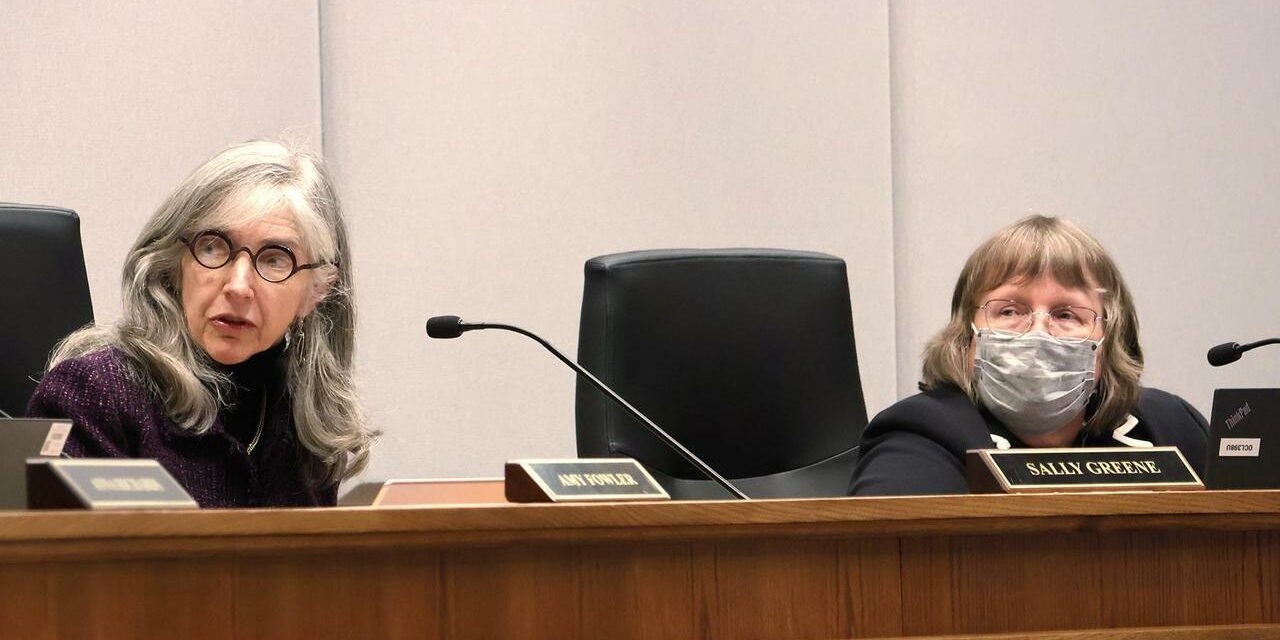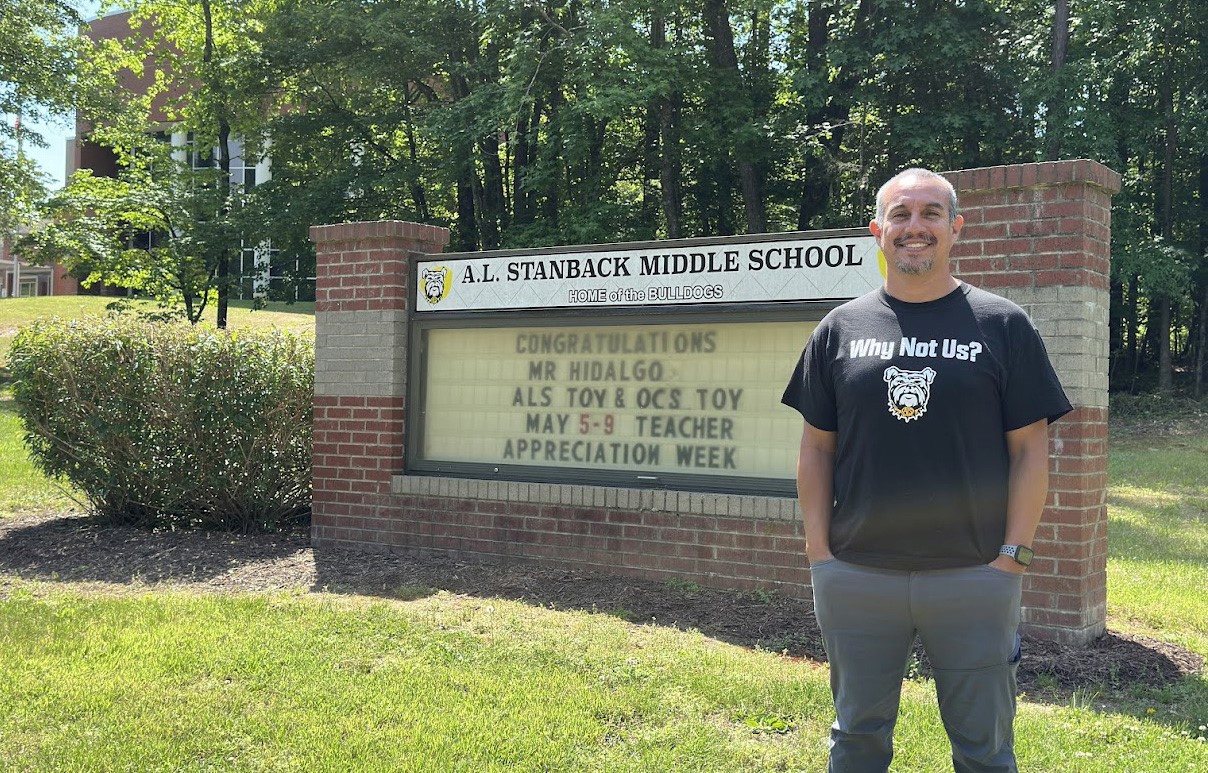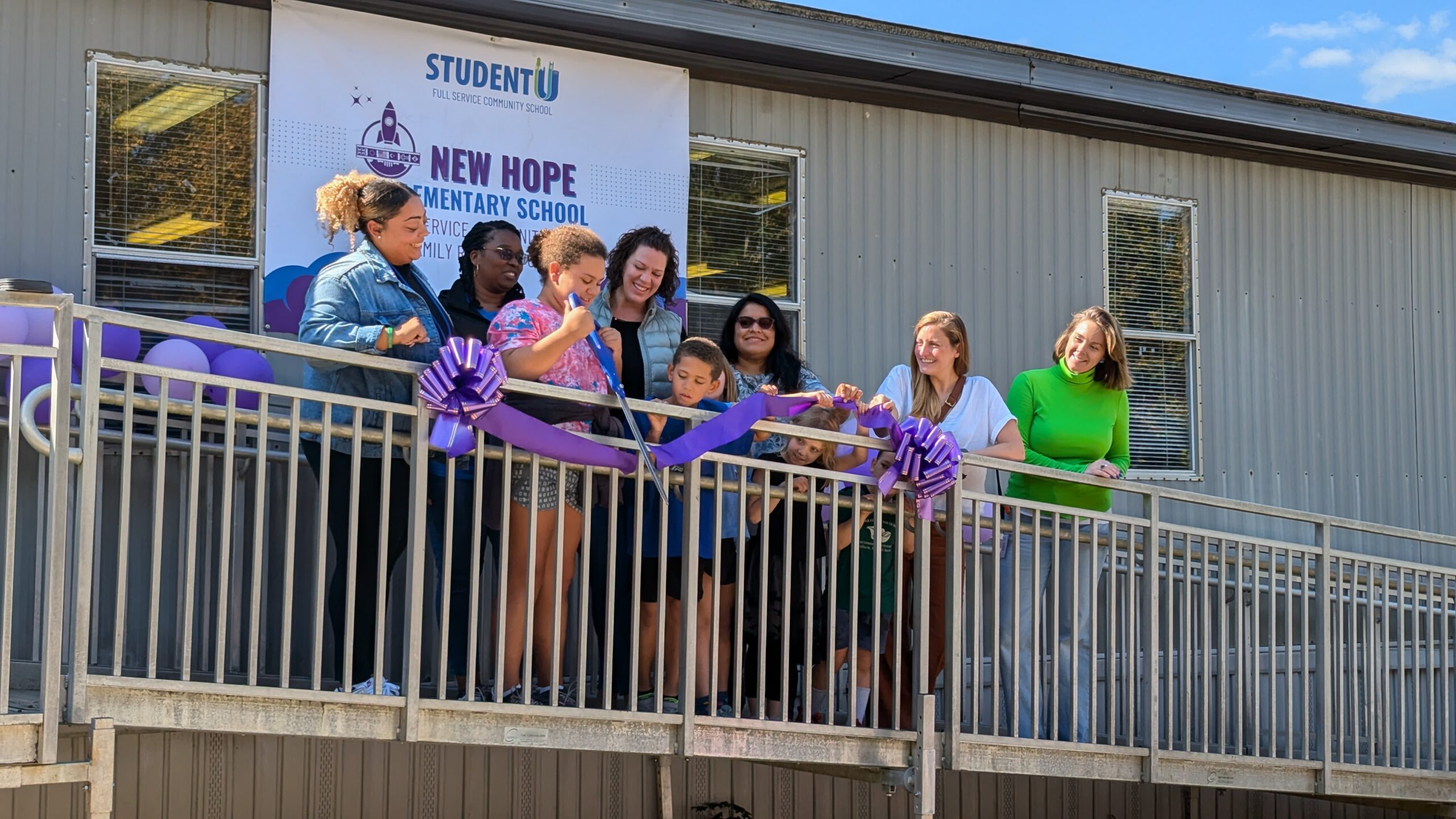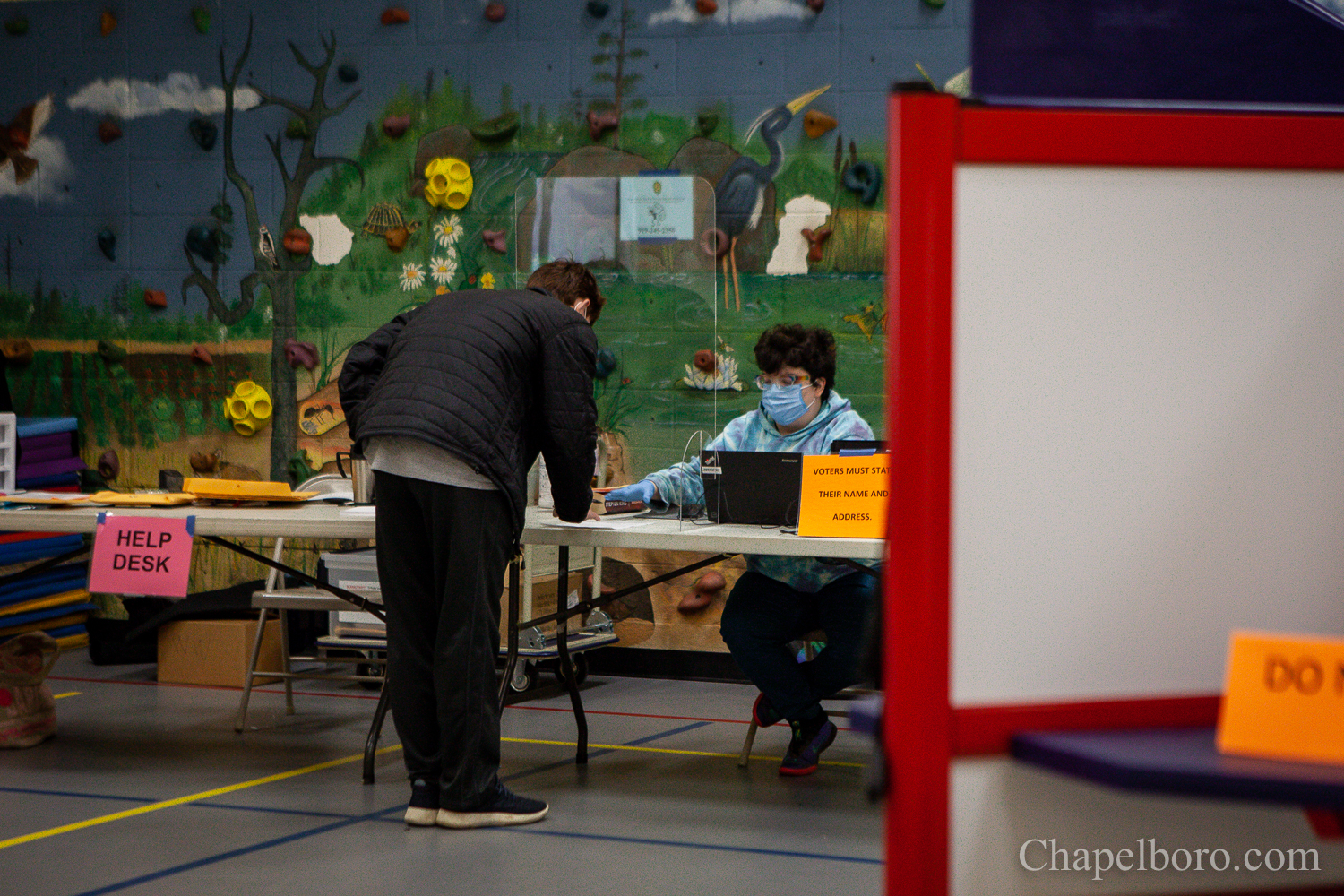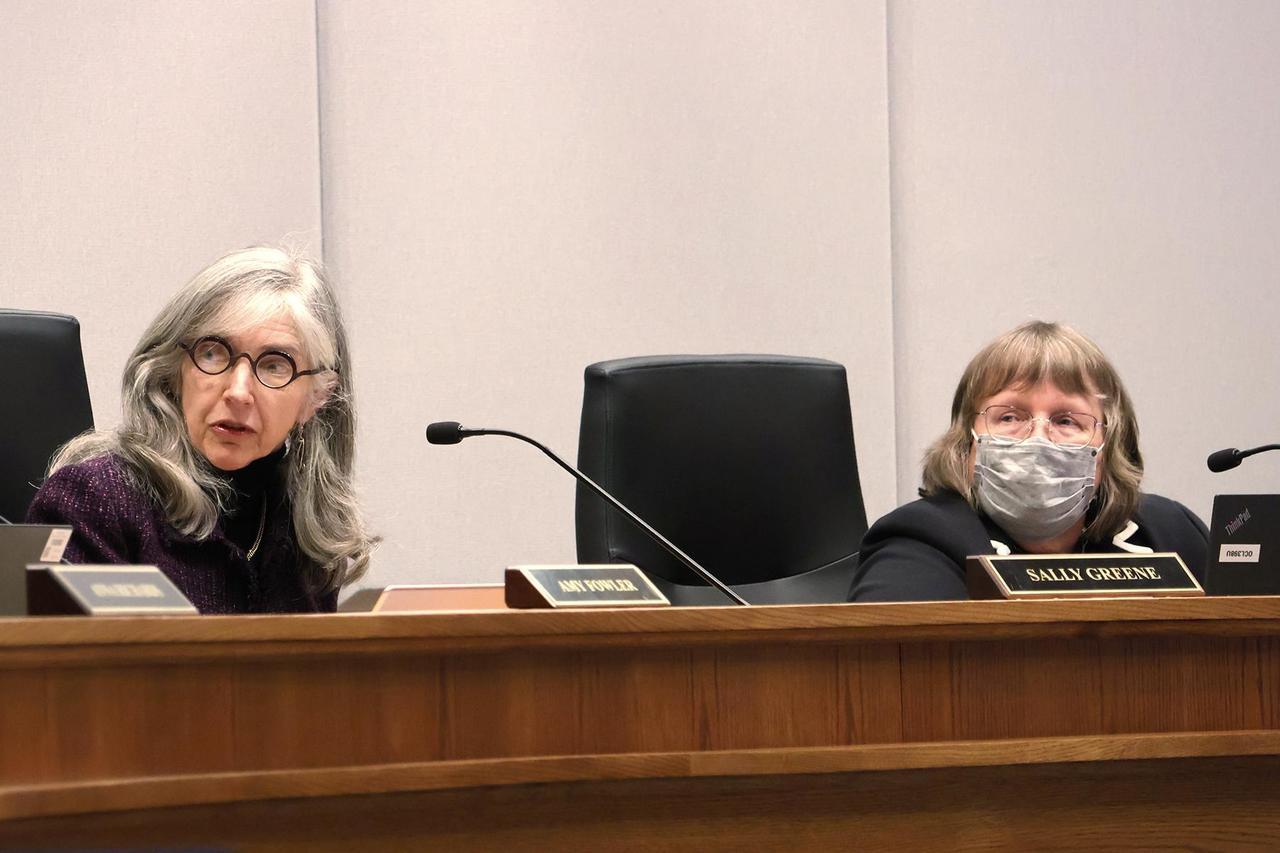The school infrastructure bond referendum planned for the fall took its latest step on Tuesday night. The Orange County Board of Commissioners officially set the framework for how the money would be divided between Chapel Hill-Carrboro City Schools and Orange County Schools and how the major projects would receive funding.
Under the parameters unanimously approved by the board, the Chapel Hill-Carrboro City Schools district would receive $174.7 million of the potential $300 million bond funding, while Orange County Schools would have $125.3 million – determined by the districts’ average daily membership. Both school systems will be required to not exceed those totals for their various projects, with the board confirming one district would never receive any of the other’s portions even if costs exceed estimates.
The $300 million would also be supplemented by an additional $100 million the county hopes to budget for both districts across the ten years from its usual budget, also called “pay-go” funding. Between both that focused spending and the covering the bond capacity, the county is projecting an 8.88-cent increase on county property taxes for fiscal year 2025-26. The public will vote on the November ballot to formally approve whether the county government will take out the debt necessary for the bond spending, but the commissioners have discussed the measure as a key part of the county’s ten-year capital improvements plan as they consider their future budgets.
While the numbers around the bond referendum are substantial, they pale in comparison to the districts’ combined infrastructure needs identified in a recent consultancy report by Woolpert. The architectural and engineering company reviewed both CHCCS and Orange County Schools campuses at the request of the county and said in November 2023 the current facilities will have nearly $500 million of infrastructure needs within five years – which rise to more than $1 billion of costs in the next 15 years based on facility age and projected maintenance.
Orange County Deputy Manager Travis Myren said the recommendations made last fall are the biggest influence in how the county plans to approach its schools’ needs – which a bond could most quickly address.
“All of the projects that move forward for capital financing from here on out would be consistent with the principles of the Woolpert plan,” Myren said on Tuesday. “And that is: newer, more efficient facilities; better educational adequacy; and high priority needs at schools that cannot be replaced due to funding constraints.”
Broadly, that includes three major projects for both school districts across ten years of bond funding. In the approved framework, the county commissioners said they intend to fund the creation of a new middle school, a replacement campus for Carrboro Elementary School, and a replacement campus for Culbreth Middle School at CHCCS. Orange County Schools could receive a new elementary school to replace the capacity for two existing schools, plus the rebuild or significant renovation of an additional elementary school and a replacement of Orange Middle School.
The Orange County commissioners also further established their plans to review how districts are using the bond funding each year and that each major project would be brought to the county government for approval – meaning those designations for major projects could evolve as discussions progress.
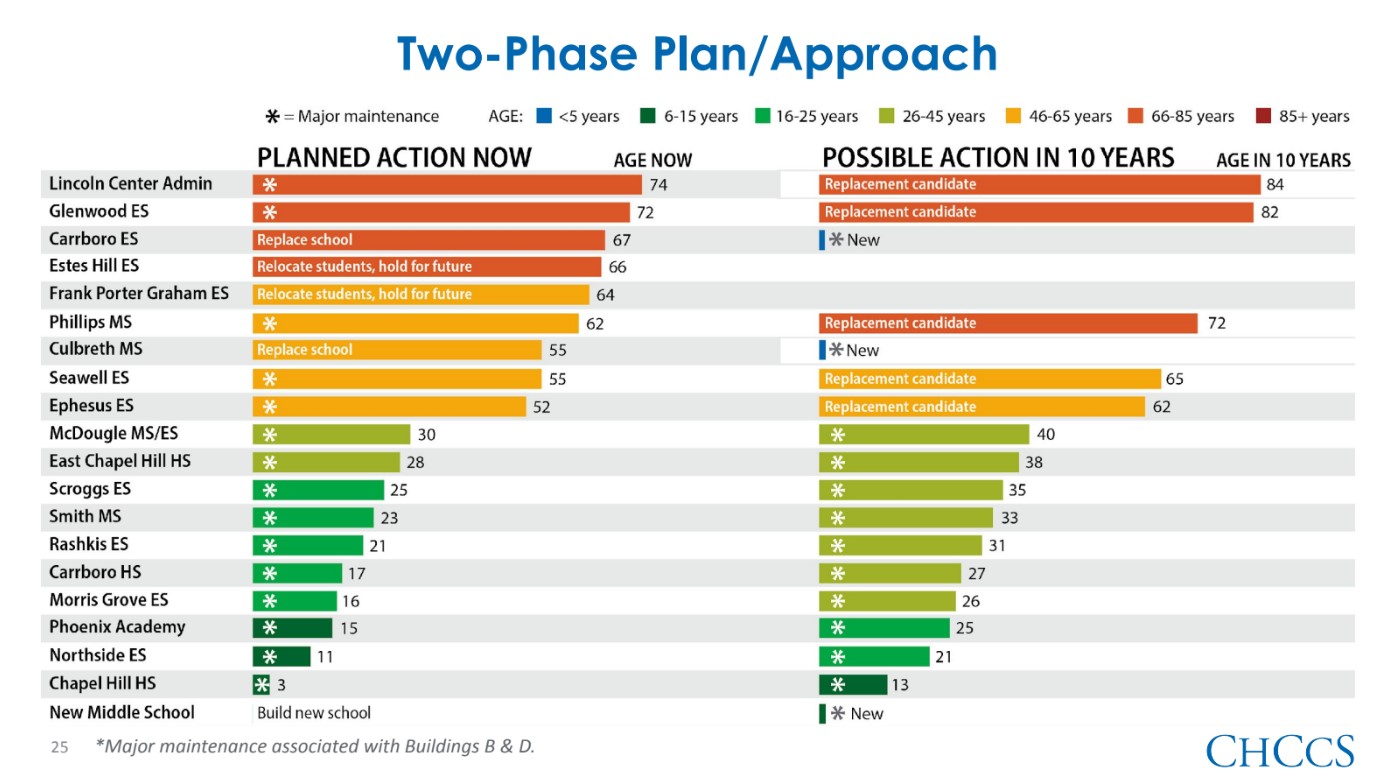
A chart of Chapel Hill-Carrboro City Schools’ facilities, with their ages and priorities of replacement. (Photo via Chapel Hill-Carrboro City Schools.)
Commissioner Jean Hamilton voiced her belief in the districts’ ability to stay flexible within the parameters of the bond funding. With an abundance of needs and the chance of emergencies, the former school board member has advocated through early discussions for the county to strike a balance of addressing what each district determines as its priorities while keeping the Woolpert report’s long-term recommendations in mind.
“What we’re seeing here may change,” Hamilton said of future school development, “but the principles in which we’ll look at that will not – and that we will be deciding by [each] project. If it doesn’t fit, we’re not going to fund it. I’ve all along thought this is just needed to make sure that what our intent [with this bond] is will happen.”
The county’s decision to pursue a bond referendum reflects the urgency stressed by Chapel Hill-Carrboro City Schools Deputy Superintendent of Operations Al Ciarochi to the county commissioners two weeks prior – when he presented the district’s tentative plan for addressing the Woolpert report’s infrastructure priorities.
“If we’re going to go big, we need to replace – not put Band-Aids on buildings that need to go,” he said. “Our schools are valued in our community, but they have reached a [stage of] life where they’ve served a good purpose, and we have to begin that [replacement] process for schools built starting in 1952 to 1958 to the early ‘60s.”
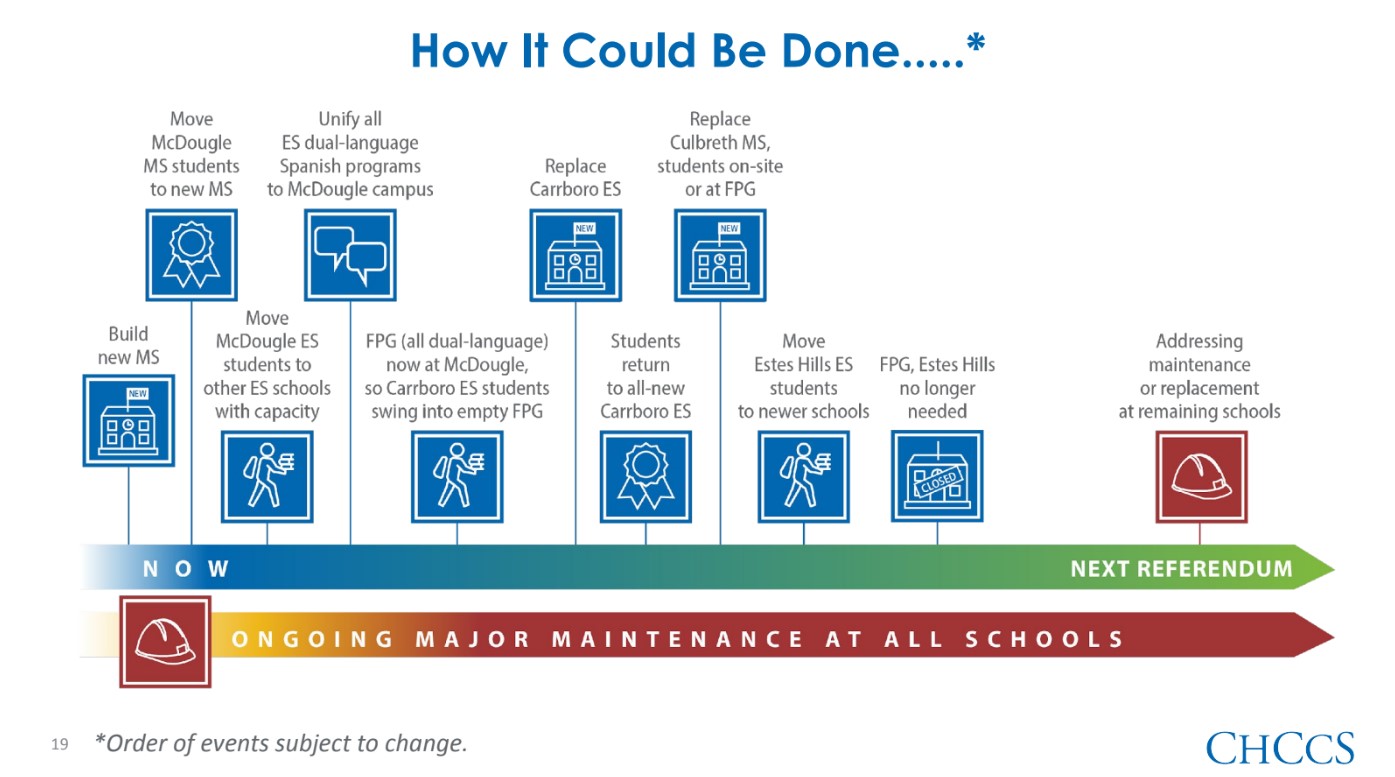
A potential timeline and series of how CHCCS could construct replacement schools, consolidate others, and shift student populations for new construction. District administrators expected to present this plan to the school board in May, but the discussion was delayed – and it led to community members sharing strong reactions to the timeline without added context. (Photo via Chapel Hill-Carrboro City Schools.)
The school districts’ boards of education will need to approve their latest capital improvements plans as the next step to officially get the bond to the November ballot. And while the general plans for school replacements will be discussed before the public’s vote, the districts will also begin parsing out the best way to transition students. Ciarochi said this could happen through consolidation of schools with declining enrollments, the temporary shifting of schools’ populations to other campuses, and redistricting.
Those strategies and discussions, which were in materials published before school board and county commissioner meetings, drew much attention from the respective school communities – specifically McDougle Elementary, McDougle Middle, Estes Hills Elementary and Frank Porter Graham Elementary schools. Those communities would be affected since CHCCS currently identifies their campuses as ones that could either be the site of new school buildings or could host other students who are being transitioned to new campuses during replacement or consolidation, according to the plan presented by Ciarochi to the county commissioners.
The confusion and concern over those schools’ futures led to impassioned public comments during Tuesday’s commissioners meeting and online. Rumors about the imminent closures of schools began floating between CHCCS families ahead of the bond discussions between district and county officials, which even led to some people already voicing opposition to the bond. But both Ciarochi and the elected leadership for CHCCS stressed that no such plans will be cemented until more community input is heard. Chair of the Board of Education George Griffin wrote in his personal newsletter that “some have feared the worst and jumped ahead of” the district’s rollout of details – and warned against undermining the discussions yet to come this summer and fall.
“This is not a criticism and is understandable,” he wrote of the negative community responses shared. “We are trying to make it clear to everyone though, that if the bond fails, then everyone suffers as there will be no new schools at all, and there will be no clear plan for continued renovation and or basic maintenance and repair.”
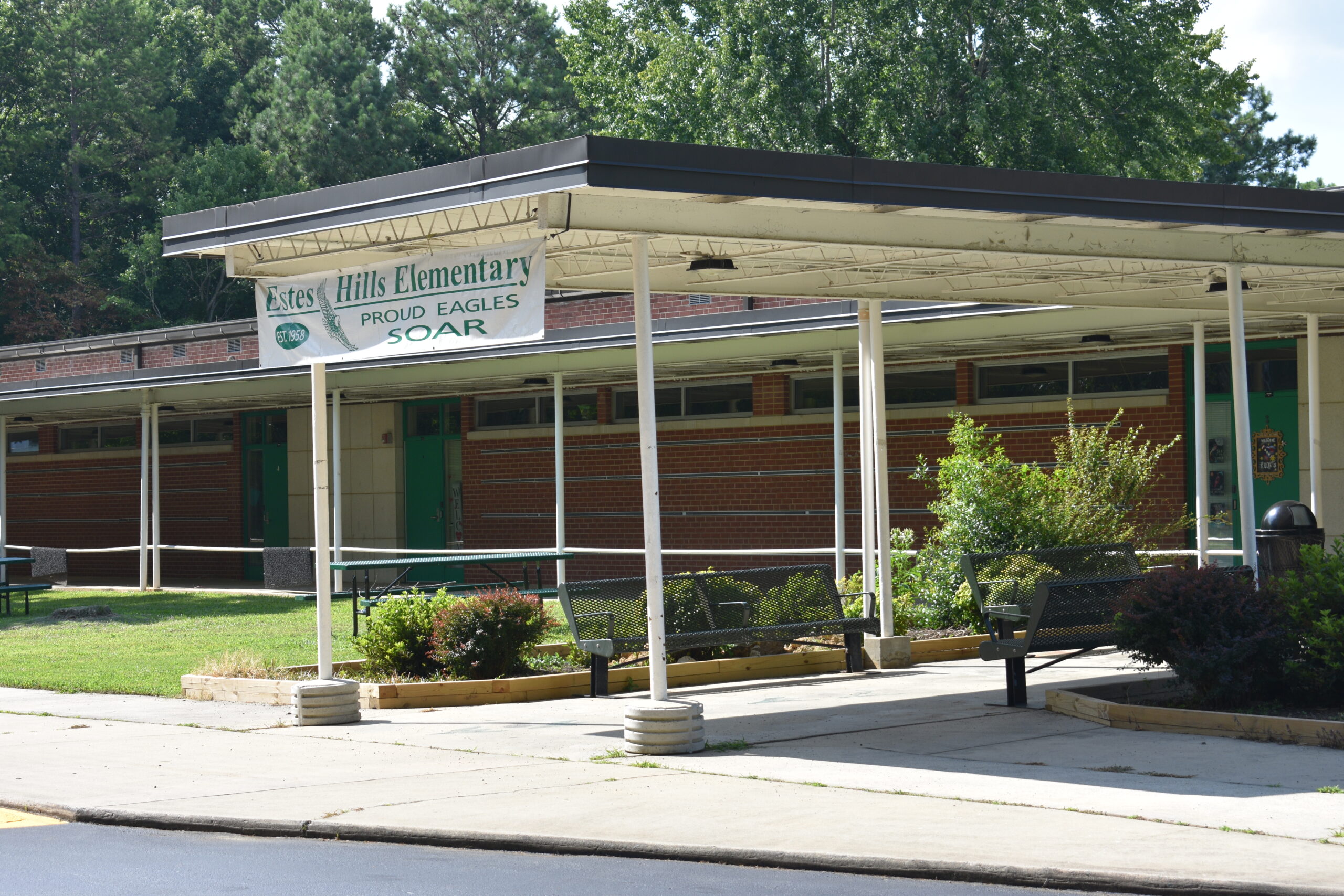
Estes Hills Elementary is one of Chapel Hill-Carrboro City Schools’ oldest facilities in the district, having been constructed in the late 1950s. District administrators say because of its proximity to Phillips Middle School and declining enrollment, the site could be an option for a future middle school or combined K-8 facility if redeveloped.
Griffin also spoke at the public comment period of Tuesday’s meeting and said he’d be surprised if his peers do not have their own ideas or tweaks to the proposal made by district staff. The CHCCS Board of Education meets on Thursday night and is set to share their latest public thoughts at that time.
“I fully anticipate that we’ll make adjustments to the plan – but you know how it is when you’re on the board, you can’t speak for the full board until [it] gets together,” Griffin said to the county commissioners. “But I do anticipate after June 6 that our staff will come back to us, probably as early as [the CHCCS school board meeting on] June 20, with alternatives.”
Just because the bond’s framework is established does not mean the county’s elected officials will be away from referendum discussions over the summer. The Orange County Commissioners approved the membership for a committee to discuss the bond’s purpose, strategies to inform the public about the bond, and methods to encourage voter participation in November. Commissioners Hamilton and Phyllis Portie-Ascott will serve as the county board’s representation, while the officials approved six members of the public to serve. Anissa McLendon, Benjamin Alschuler, and Andrea Tanner will represent the CHCCS community, while Jason Johnson, Samantha Earnhardt and Vina Modaress will represent the Orange County Schools community.
Board of Education Member Rani Dasi and Ciarochi will be the pair of CHCCS district representatives, while Orange County Schools has yet to finalize their representatives for the committee.
Featured image via the Orange County Government.
Chapelboro.com does not charge subscription fees, and you can directly support our efforts in local journalism here. Want more of what you see on Chapelboro? Let us bring free local news and community information to you by signing up for our newsletter.

